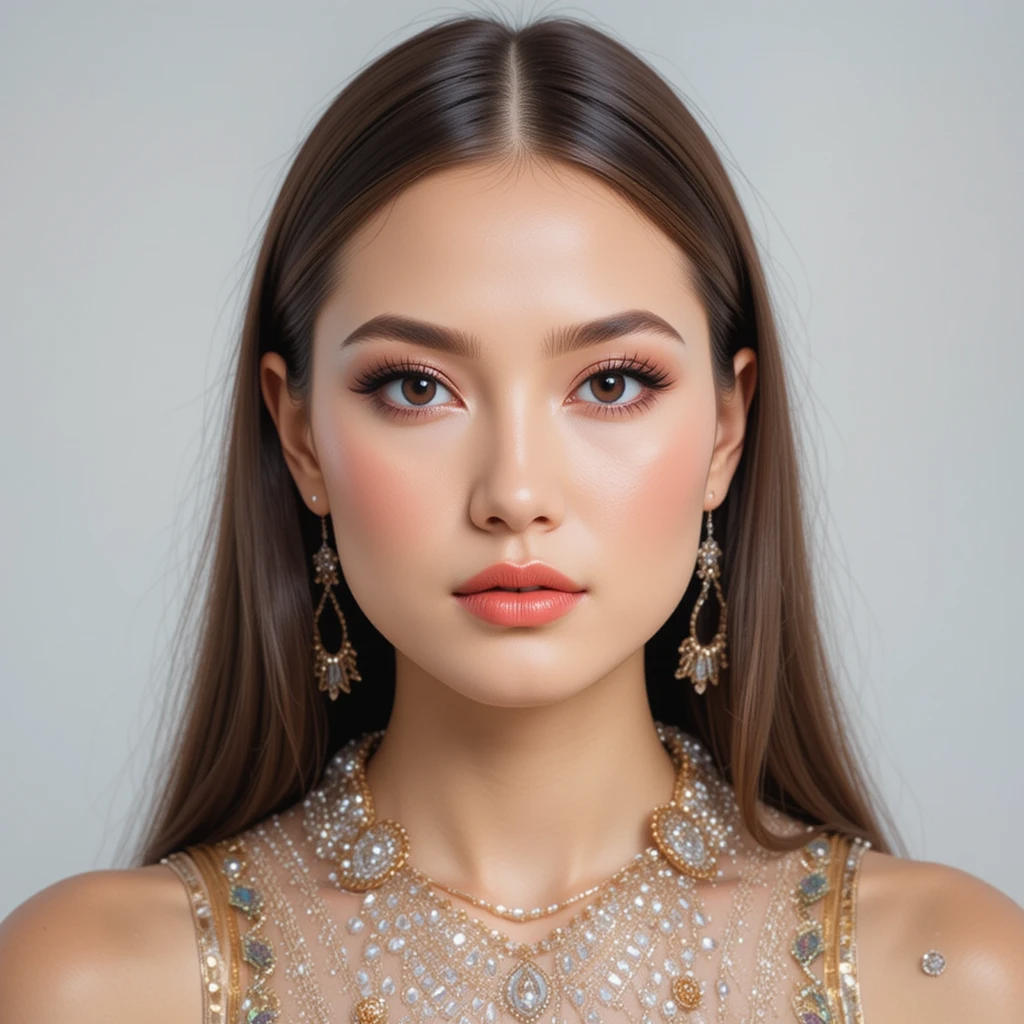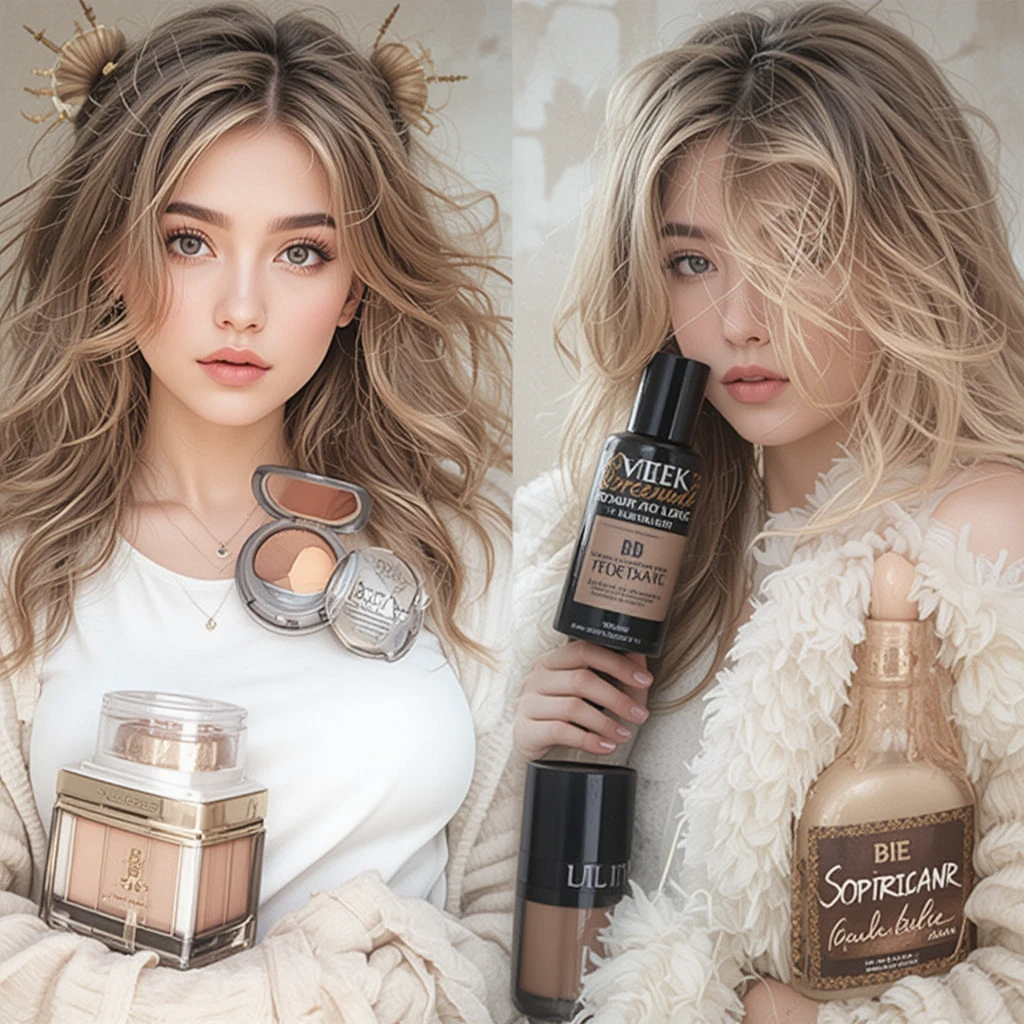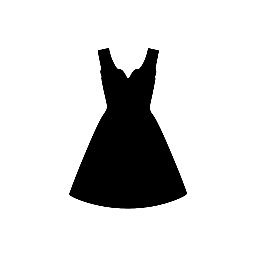
Introduction
In the world of beauty and fashion, understanding your unique color profile can be transformative. Color analysis—the practice of determining which hues best complement your natural features—has evolved from a trend into a powerful styling tool. By aligning your makeup choices with your skin’s undertones, eye color, and hair shade, you can create looks that enhance your natural beauty rather than compete with it.
This guide will break down the fundamentals of seasonal color analysis, explain how to identify your personal palette, and provide actionable tips for selecting makeup that harmonizes perfectly with your wardrobe.
1. The Basics of Seasonal Color Analysis
The traditional seasonal color system categorizes individuals into four main groups based on their natural coloring:
Winter
- Characteristics: High contrast between skin, hair, and eyes (e.g., dark hair with fair skin or icy blonde with deep eyes)
- Best Makeup Colors: Bold jewel tones (emerald, sapphire), true reds, and cool pinks
- Avoid: Warm, muted tones like peach or mustard
Spring
- Characteristics: Warm undertones with light, golden features (e.g., strawberry blonde hair, freckles)
- Best Makeup Colors: Coral, peach, golden browns, and fresh greens
- Avoid: Cool, dark shades like burgundy or slate gray
Summer
- Characteristics: Cool undertones with soft, blended features (e.g., ash blonde or light brown hair, muted blue/green eyes)
- Best Makeup Colors: Dusty rose, lavender, soft mauve, and cool taupes
- Avoid: Overly bright or warm shades like orange or bronze
Autumn
- Characteristics: Warm undertones with rich, earthy features (e.g., auburn hair, olive or golden skin)
- Best Makeup Colors: Terracotta, burnt orange, moss green, and deep browns
- Avoid: Pastels and icy tones
2. How to Determine Your Season
Step 1: Identify Your Undertone
- Cool Undertones: Veins appear blue/purple, silver jewelry flatters you more than gold
- Warm Undertones: Veins look greenish, gold jewelry enhances your complexion
- Neutral Undertones: A mix of both; most colors work well
Step 2: Assess Your Contrast Level
- High Contrast: Dark hair + light skin or vice versa (likely Winter or Spring)
- Low Contrast: Hair, skin, and eyes are similar in depth (likely Summer or Autumn)
Step 3: Test Colors
Hold different fabric swatches (or makeup shades) near your face in natural light. Notice which ones brighten your complexion versus those that wash you out.
3. Makeup Strategies for Each Season
Winter
- Lips: Berry stains, deep reds, or cool-toned nudes
- Eyes: Smoky grays, navy liner, or frosted silver shadows
- Cheeks: Soft pink or rosy blush for balance

Spring
- Lips: Peachy glosses, warm corals, or honeyed nudes
- Eyes: Golden champagne, soft bronze, or olive green
- Cheeks: Creamy apricot or terracotta blush
Summer
- Lips: Muted rose, mauve, or soft berry
- Eyes: Cool taupes, lavender, or sheer gray
- Cheeks: Powder pink or lilac-toned blush
Autumn
- Lips: Brick red, cinnamon, or caramel brown
- Eyes: Copper, forest green, or warm chocolate
- Cheeks: Ginger or russet-toned blush
4. Coordinating Makeup with Your Wardrobe
- Monochromatic Pairing: Match your lipstick to a top or accessory (e.g., a burgundy scarf with a deep wine lip).
- Complementary Contrast: If wearing all black, add a pop of color with a seasonal-accurate bright lip or eye.
- Neutral Anchoring: Balance a bold outfit (like a patterned dress) with neutral makeup, or vice versa.
5. Common Mistakes & How to Fix Them
❌ Ignoring Undertones – Wearing warm foundation when you’re cool-toned can make skin look sallow.
✅ Fix: Test foundations on your jawline in natural light.
❌ Overdoing Trends – Just because neon eyeshadow is in doesn’t mean it suits your palette.
✅ Fix: Adapt trends to your season (e.g., Winters can try electric blue, while Autumns opt for teal).
❌ Mismatched Intensity – Soft Summer features can drown in dark, heavy makeup.
✅ Fix: Stick to sheer formulas and blended edges.
6. Celebrity Examples by Season
- Winter: Anne Hathaway, Lupita Nyong’o
- Spring: Gigi Hadid, Amy Adams
- Summer: Kate Middleton, Nicole Kidman
- Autumn: Julia Roberts, Jessica Chastain
Conclusion
Color analysis isn’t about limiting your choices—it’s about discovering the shades that make you look effortlessly radiant. By understanding your seasonal palette, you can curate a makeup collection that works in harmony with your wardrobe, saving time and elevating your everyday style.
The best part? When your makeup and clothing align with your natural coloring, confidence becomes your signature accessory.

0 responses to “The Science of Color Analysis: Matching Makeup to Your Personal Palette”